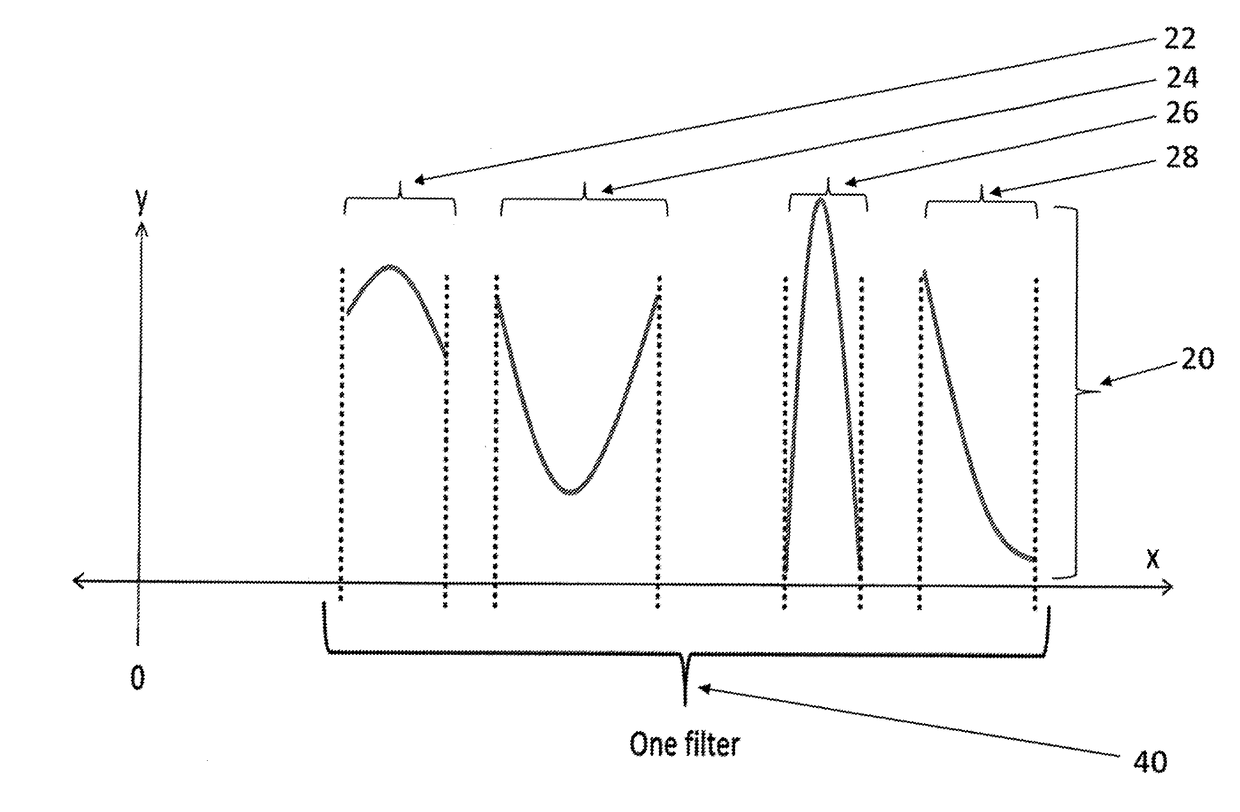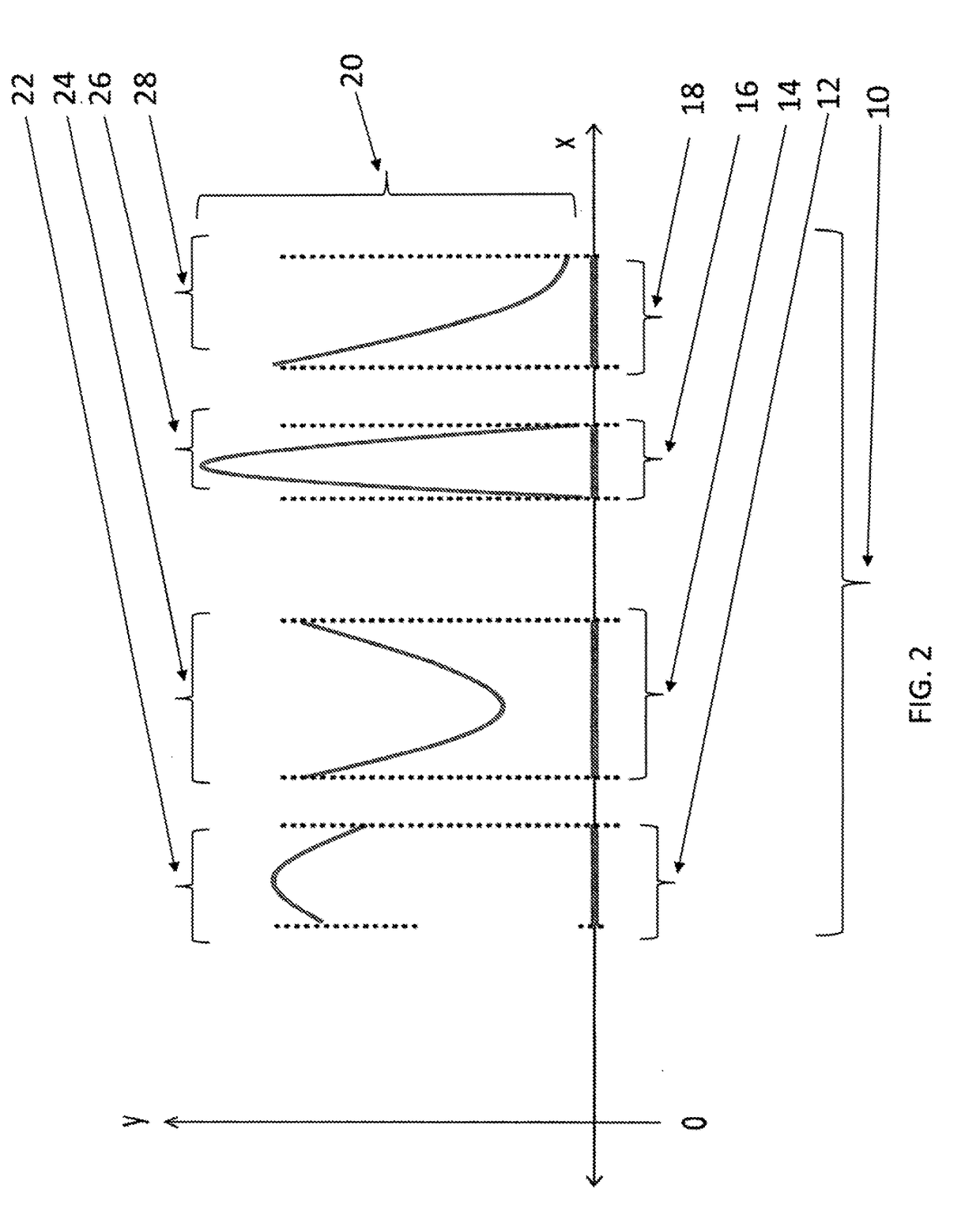Design method for choosing spectral selectivity in multispectral and hyperspectral systems
a design method and hyperspectral system technology, applied in the field of parameterizing a weighting function, can solve the problems of lagging spectral selectivity/differentiation, affecting the performance of the system, and a large set of spectral channels can be problematic for tasks, etc., to achieve rapid learning and high adaptability
- Summary
- Abstract
- Description
- Claims
- Application Information
AI Technical Summary
Benefits of technology
Problems solved by technology
Method used
Image
Examples
Embodiment Construction
[0023]In the course of solving the above-mentioned optimization problem. Applicants developed the four major components that make up the general spectral selection problem and the weighting function (filter) parameterization / encoding according to an embodiment of the invention. They realized their solution's applicability to a wide range of device designs, such as manufacturing or digital designs for photonic systems, electrical circuits, digital filters, acoustic filters, electric filters, or electromagnetic filters.
[0024]An embodiment of the invention includes a method and is described as follows with reference to FIGS. 1-3. A first plurality 10 of numerical support sub-regions is provided, as shown by way of illustration in FIG. 1. Only four numerical support sub-regions 12, 14, 16, 18 are shown for ease of understanding. One of ordinary skill in the art will readily appreciate that practical embodiments of the invention include less than four numerical support or greater than fo...
PUM
 Login to View More
Login to View More Abstract
Description
Claims
Application Information
 Login to View More
Login to View More - R&D
- Intellectual Property
- Life Sciences
- Materials
- Tech Scout
- Unparalleled Data Quality
- Higher Quality Content
- 60% Fewer Hallucinations
Browse by: Latest US Patents, China's latest patents, Technical Efficacy Thesaurus, Application Domain, Technology Topic, Popular Technical Reports.
© 2025 PatSnap. All rights reserved.Legal|Privacy policy|Modern Slavery Act Transparency Statement|Sitemap|About US| Contact US: help@patsnap.com



